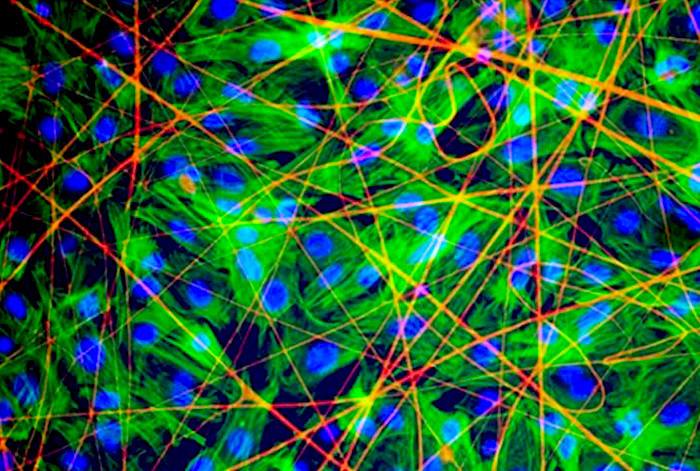Cultivating replacement organs and tissues from a patient’s own cells is on the leading edge of medical research. Regenerating new organs can help solve the problem of transplant rejection, but it’s challenge finding a suitable framework, or substrate, to grow cells on. The material should be non-toxic and elastic and should not be rejected by the body or impede cell growth.
Now a group of researchers led by Professor Konstantin Agladze of the Moscow Institute of Physics and Technology, has successfully cultivated fully functional cardiac tissues, able to contract and conduct excitation waves, from cells called cardiomyocytes. Previously, the group used synthetic nanofibers but recently decided to try another material – fibers of a spider web protein called spidroin. Cobweb strands are incredibly light and durable – five times stronger than steel, twice as elastic as nylon, and capable of stretching a third of their length. The structure of spidroin molecules that make up cobweb drag lines is similar to that of the silk protein, fibroin, but is much more durable.
Researchers normally use artificial spidroin fiber matrices as a substrate to grow implants like bones, tendons and cartilages, as well as dressings. Professor Agladze’s team decided to find out whether a spidroin substrate derived from genetically modified yeast cells can serve to grow cardiac cells.
For this purpose, they seeded isolated neonatal rat cardiomyocytes on fiber matrices. During the experiment, the researchers monitored the growth of the cells and tested their contractibility and the ability to conduct electric impulses, which are the main features of normal cardiac tissue.
The monitoring, carried out with the help of a microscope and fluorescent markers, showed that within three to five days a layer of cells formed on the substrate that were able to contract synchronously and conduct electrical impulses just like the tissue of a living heart would.
“We can answer positively all questions we put at the beginning of this research project,” Professor Agladze says. “Cardiac tissue cells successfully adhere to the substrate of recombinant spidroin; they grow forming layers and are fully functional, which means they can contract coordinately.”
Source: Alexander Teplenin, Anna Krasheninnikova, Nadezhda Agladze, Konstantin Sidoruk, et.al. Functional Analysis of the Engineered Cardiac Tissue Grown on Recombinant Spidroin Fiber Meshes. PLOS ONE, 2015; 10 (3): e0121155 DOI: 10.1371/
Journal: http://journals.plos.org/












